Ceramics and Pottery
Tennessee, USA (Mid-20th Century)
Mid-century modern pottery, flourishing from the mid-1940s to the late 1960s, is characterized by its clean lines, organic shapes, and innovative glazes. This era saw a rise in studio pottery, where individual artists and small workshops created unique, often hand-crafted pieces that moved away from mass production. These pieces frequently incorporated abstract designs and experimented with textures and forms, reflecting the broader artistic and design movements of the time.
Pigeon Forge Pottery, established in Tennessee, is known for its handcrafted ceramics that often embody this mid-century aesthetic. Pieces from this studio, especially those with distinctive carved designs or unique glazes, are sought after by collectors. The abstract motifs seen on this vase are typical of the period's artistic sensibilities, aiming for a balance between form and decorative appeal.
To inquire about pricing and availability, please email BALL HILL The Arcade at info@ballhill.com.
Signed 'Banker' or 'Barker', dated 1986. (United States)
The late 20th century saw a flourishing of studio pottery, particularly in the United States, where individual artists and small workshops produced unique ceramic pieces. These artists often experimented with glazes, forms, and decorative techniques, drawing inspiration from both historical traditions and contemporary art movements. The year 1986 falls within this vibrant period, characterized by a focus on craftsmanship and artistic expression.
Potters from this era often signed or marked their work with their name or studio name, along with the year of creation, to authenticate their pieces. These marks are invaluable for collectors and historians, providing direct links to the artist and the specific time of production. The presence of such a mark on this vase suggests it is a deliberate artistic creation rather than a mass-produced item.
To inquire about pricing and availability, please email BALL HILL The Arcade at info@ballhill.com.
This particular vase, with its speckled glaze and rounded form, is characteristic of contemporary studio pottery. Such pieces are often created by individual artists or small studios, with variations in glaze application and firing contributing to the unique character of each item. The earthy tones and textured surface suggest a rustic or naturalistic aesthetic, popular in modern decorative arts.
Studio pottery emerged in the late 19th and early 20th centuries as artists sought to elevate ceramics beyond purely functional or industrial production. These potters often focused on unique glazes, forms, and decorative techniques, emphasizing the artist's hand in the creation process. This movement led to a greater appreciation for pottery as an art form, with many pieces being collected for their aesthetic qualities.
To inquire about pricing and availability, please email BALL HILL The Arcade at info@ballhill.com.
This particular vase, with its textured surface and variegated glaze, is characteristic of mid-20th century studio pottery. The impressed dot pattern and the way the glaze pools and drips suggest a deliberate artistic choice, aiming for a rustic yet refined appearance. Such pieces are often appreciated for their tactile qualities and the unique character imparted by the firing process, making them sought-after by collectors of contemporary craft and decorative arts.
Studio pottery emerged as a significant movement in the late 19th and early 20th centuries, emphasizing individual artistic expression and craftsmanship over mass production. Potters began to experiment with new forms, glazes, and firing techniques, moving away from purely functional ceramics towards decorative and sculptural pieces. This movement gained particular traction in Japan and the United States, with artists developing unique styles that reflected their cultural backgrounds and personal aesthetics.
To inquire about pricing and availability, please email BALL HILL The Arcade at info@ballhill.com.
Drawing on the personal inspiration of his late grandmother, Rebecca Olivia Martin, Austin Snowden has created a series of beautiful pots. Each pot feature a lovely lavender color, a shade that was a favorite of both Austin and his grandmother. Each piece is a testament to Austin's unique firing process, where the pots are fired to a searing 1,000° Fahrenheit. They are then carefully moved to a reduction chamber and, while still hot, are quenched in water. This final step is what stops the oxidation process and gives each pot its own unique character.
To inquire about pricing and availability, please email BALL HILL The Arcade at info@ballhill.com.
Drawing on the personal inspiration of his late grandmother, Rebecca Olivia Martin, Austin Snowden has created a series of beautiful pots. Each pot feature a lovely lavender color, a shade that was a favorite of both Austin and his grandmother. Each piece is a testament to Austin's unique firing process, where the pots are fired to a searing 1,000° Fahrenheit. They are then carefully moved to a reduction chamber and, while still hot, are quenched in water. This final step is what stops the oxidation process and gives each pot its own unique character.
To inquire about pricing and availability, please email BALL HILL The Arcade at info@ballhill.com.
Austin Snedded, Ceramist
Pair of Wild Turkey Feather Rakus: ‘UNTITLED #2’ and 'Untitled #3'
23.5" x 23.5" Wild Turkey Feather Raku (2025)
Each tile is individually formed, cut, and fired to 1,000 degrees farenheit before it is taken out of the kiln. While the tile is red hot and fresh from the kiln, it is to be decorated with horsehair and/or wild turkey feathers at just the right temperature. Too hot and the carbon burns away, too cool and the carbon does not imprint. It’s a wild dance Austin is very passionate about.
To inquire about pricing and availability, please email BALL HILL The Arcade at info@ballhill.com.
Austin Snedded, Ceramist
‘UNTITLED #1’
26.5" x 26.5" Horsehair Raku (2025)
Each tile is individually formed, cut, and fired to 1,000 degrees farenheit before it is taken out of the kiln. While the tile is red hot and fresh from the kiln, it is to be decorated with horsehair and/or wild turkey feathers at just the right temperature. Too hot and the carbon burns away, too cool and the carbon does not imprint. It’s a wild dance Austin is very passionate about.
To inquire about pricing and availability, please email BALL HILL The Arcade at info@ballhill.com.
Celadon pottery originated in China and has been produced for centuries, prized for its subtle green glaze that resembles jade. The glaze is achieved through a specific firing process that reduces iron oxide to ferrous oxide, creating the distinctive color. Celadon ware was particularly popular during the Song Dynasty (960-1279 AD).
This vase, with its 10" x 10" dimensions, is a substantial piece, making it more desirable as a decorative item. The matte finish and the style of the floral design suggest a contemporary interpretation of classic celadon aesthetics.
While it may not be an antique, its decorative appeal and craftsmanship still give it considerable value.
To inquire about pricing and availability, please email BALL HILL The Arcade at info@ballhill.com.
The vase is characteristic of the Art Nouveau movement, which flourished from the 1890s to the 1910s.
This era was characterized by its emphasis on organic forms, intricate designs, and the incorporation of natural elements. Art Nouveau aimed to break away from traditional artistic styles, embracing modernity and innovation in design.
The vase's floral motifs, flowing lines, and use of color are all hallmarks of Art Nouveau aesthetics.
Given the style and the floral design, it resembles some of the pottery produced by companies like Amphora or even some of the more elaborate pieces from makers in Longwy, France, known for their enameled pottery.
Without a maker's mark, it's difficult to pinpoint the exact origin, but the quality suggests a well-regarded manufacturer from the period.
Pieces from this period often feature stylized depictions of flowers, leaves, and other natural forms, reflecting a desire to bring the beauty of the natural world into everyday objects. The style was particularly popular in Europe and the United States, influencing various art forms, including ceramics, glasswork, and decorative arts.
To inquire about pricing and availability, please email BALL HILL The Arcade at info@ballhill.com.
Red Wing Pottery was founded in Red Wing, Minnesota, in 1877. The company produced a wide range of stoneware, art pottery, and dinnerware. Red Wing is particularly known for its mid-century modern designs and durable, functional pieces that were popular in American households.
The company ceased production in 1967, making vintage Red Wing pieces increasingly collectible. The matte pastel colors, like the pink seen in this vase, were a signature of Red Wing's art pottery line. These pieces often have a simple, elegant form that fits well with both vintage and contemporary decor.
To inquire about pricing and availability, please email BALL HILL The Arcade at info@ballhill.com.
Blue and white porcelain originated in China during the Yuan Dynasty (1279-1368) and became a dominant style during the Ming (1368-1644) and Qing (1644-1912) dynasties. The cobalt blue pigment used for the decoration was often imported from Persia, adding to the value and prestige of these wares. The designs typically feature landscapes, figures, and auspicious symbols.
These vases were produced for both domestic use and export, becoming highly sought after in Europe and other parts of the world. The technique involves painting the design onto the porcelain body before glazing and firing at high temperatures. The resulting pieces are prized for their beauty, durability, and cultural significance.
To inquire about pricing and availability, please email BALL HILL The Arcade at info@ballhill.com.
Pair of Tall Black Ceramic Obelisks (6.5" base x 31" tall).
To inquire about pricing and availability, please email BALL HILL The Arcade at info@ballhill.com.
Blue Aqua Ceramic Cut-Out Vase
10” x 6”
To inquire about pricing and availability, please email BALL HILL The Arcade at info@ballhill.com.
Handcrafted Contemporary Green Drip-Glazed Ceramic Vase (12.5” tall)
The glaze effect is achieved by allowing the top layer of glaze to run down the sides during firing. Influenced by the art pottery tradition, showcasing a flowing glaze effect, the style is reminiscent of the experimental glaze techniques that were popular during the early 20th century, where potters sought to create visually striking and unique surface finishes.
To inquire about pricing and availability, please email BALL HILL The Arcade at info@ballhill.com.
This Anheuser-Busch "After The Hunt" stein was produced in 1991 as part of a series of collectible beer steins. These steins were often commissioned to commemorate special events or to celebrate the company's heritage. They were typically made in limited editions, making them attractive to collectors.
Anheuser-Busch, the brewer of Budweiser, has a long history of producing collectible items, including steins, to promote its brand. The
"After The Hunt" stein features a detailed scene, likely inspired by classic hunting imagery, and is made with a combination of ceramic and metal components. While not exceptionally rare, these steins are sought after by collectors of breweriana and Anheuser-Busch memorabilia.
To inquire about pricing and availability, please email BALL HILL The Arcade at info@ballhill.com.

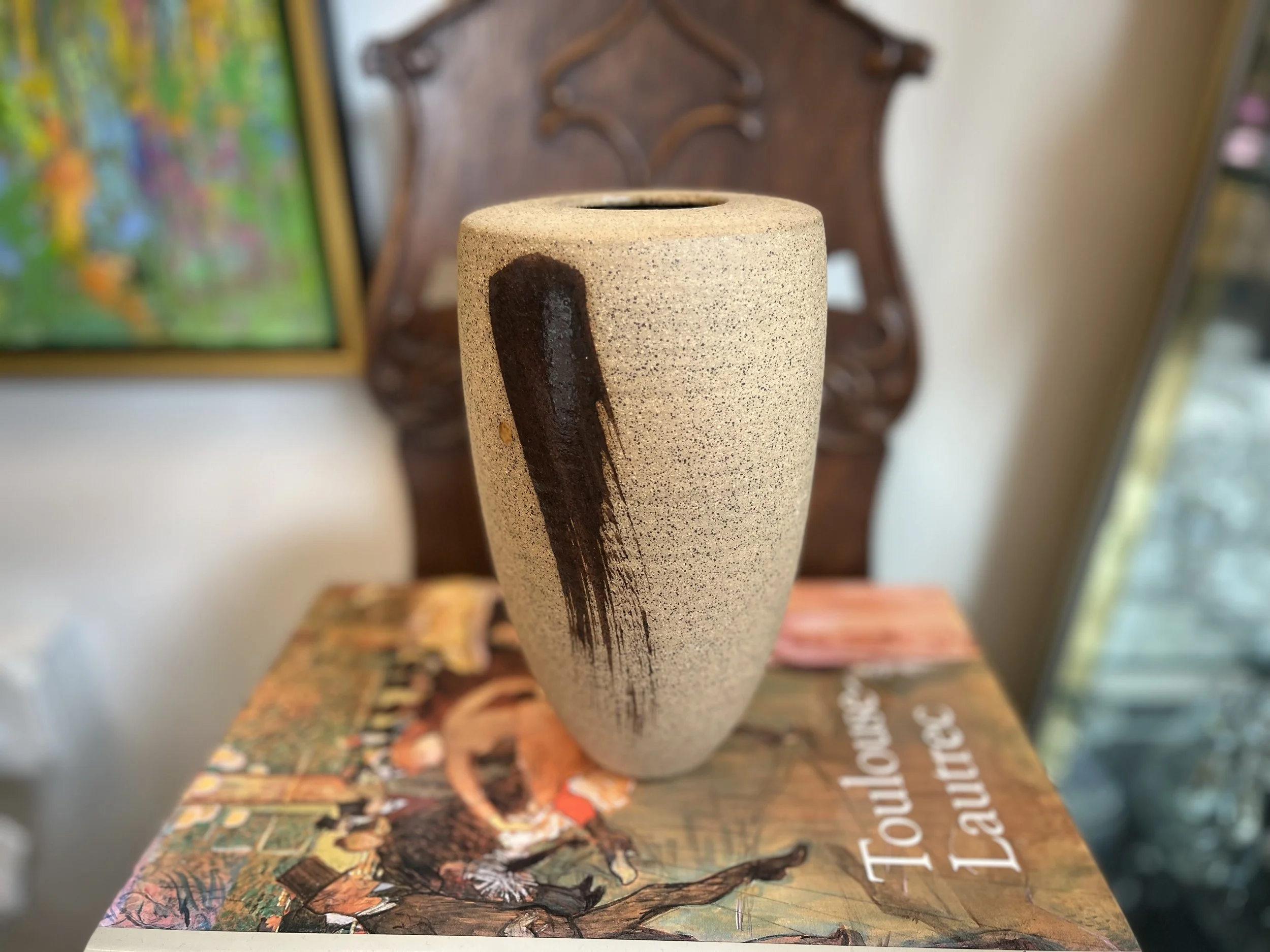
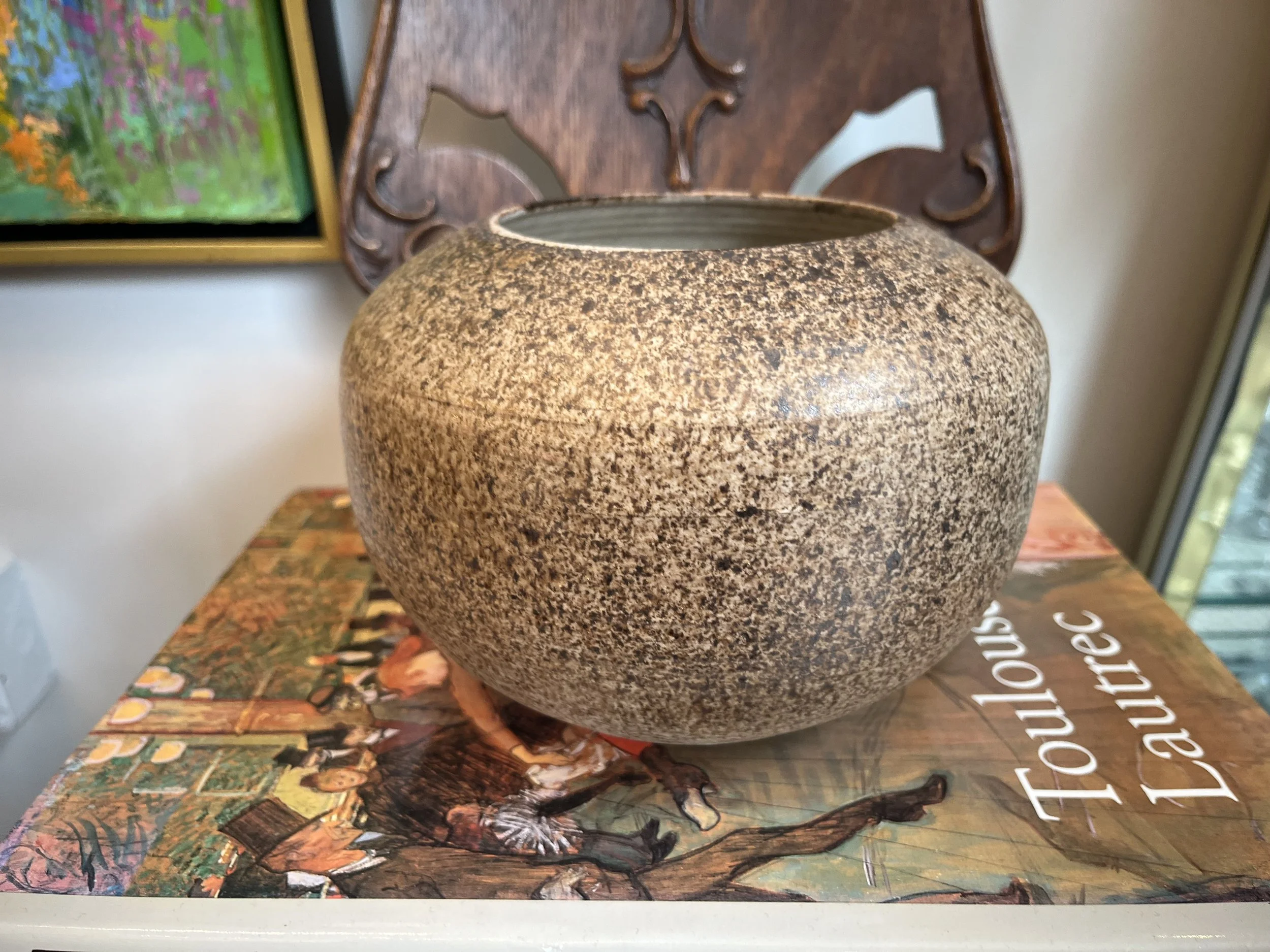
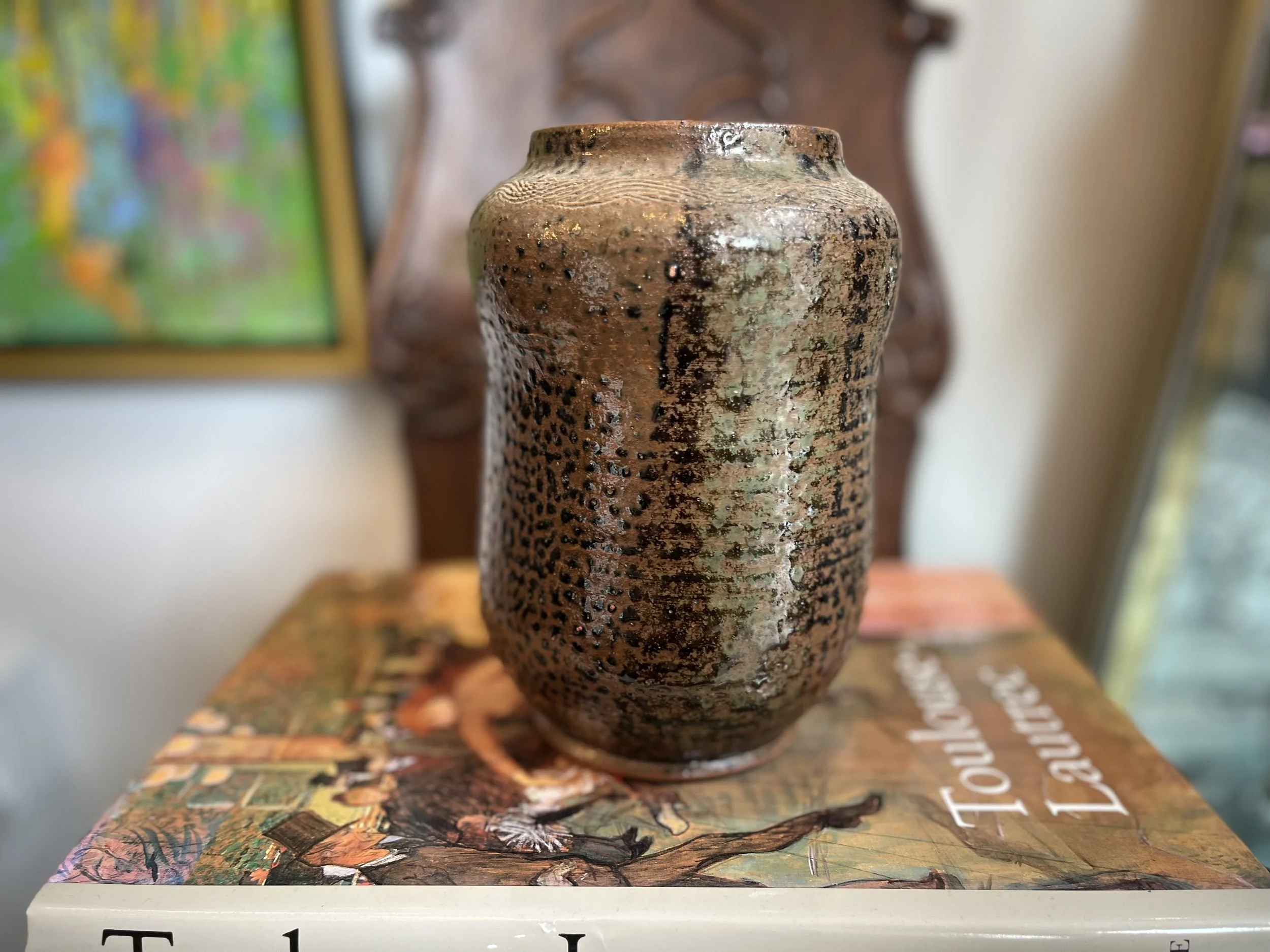
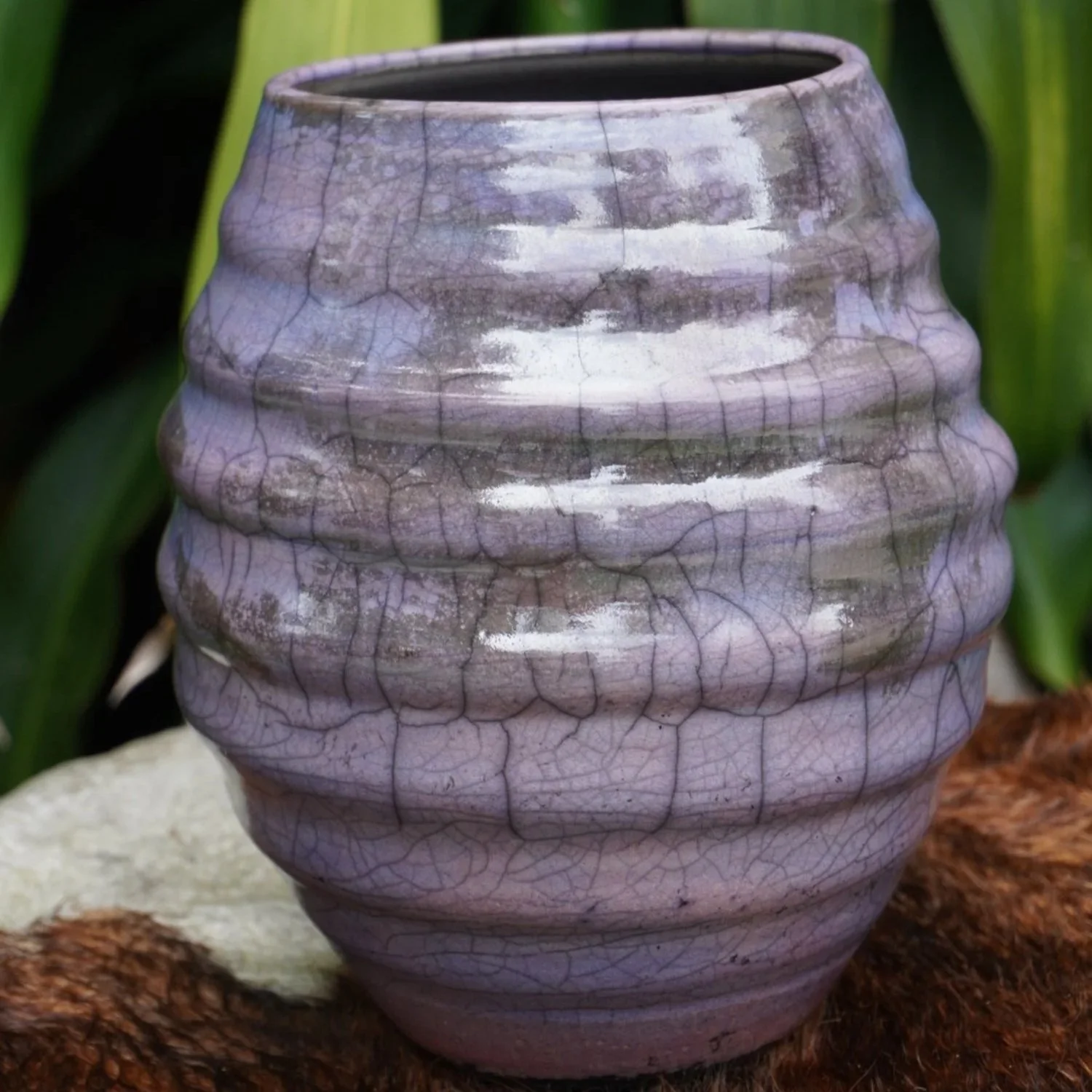
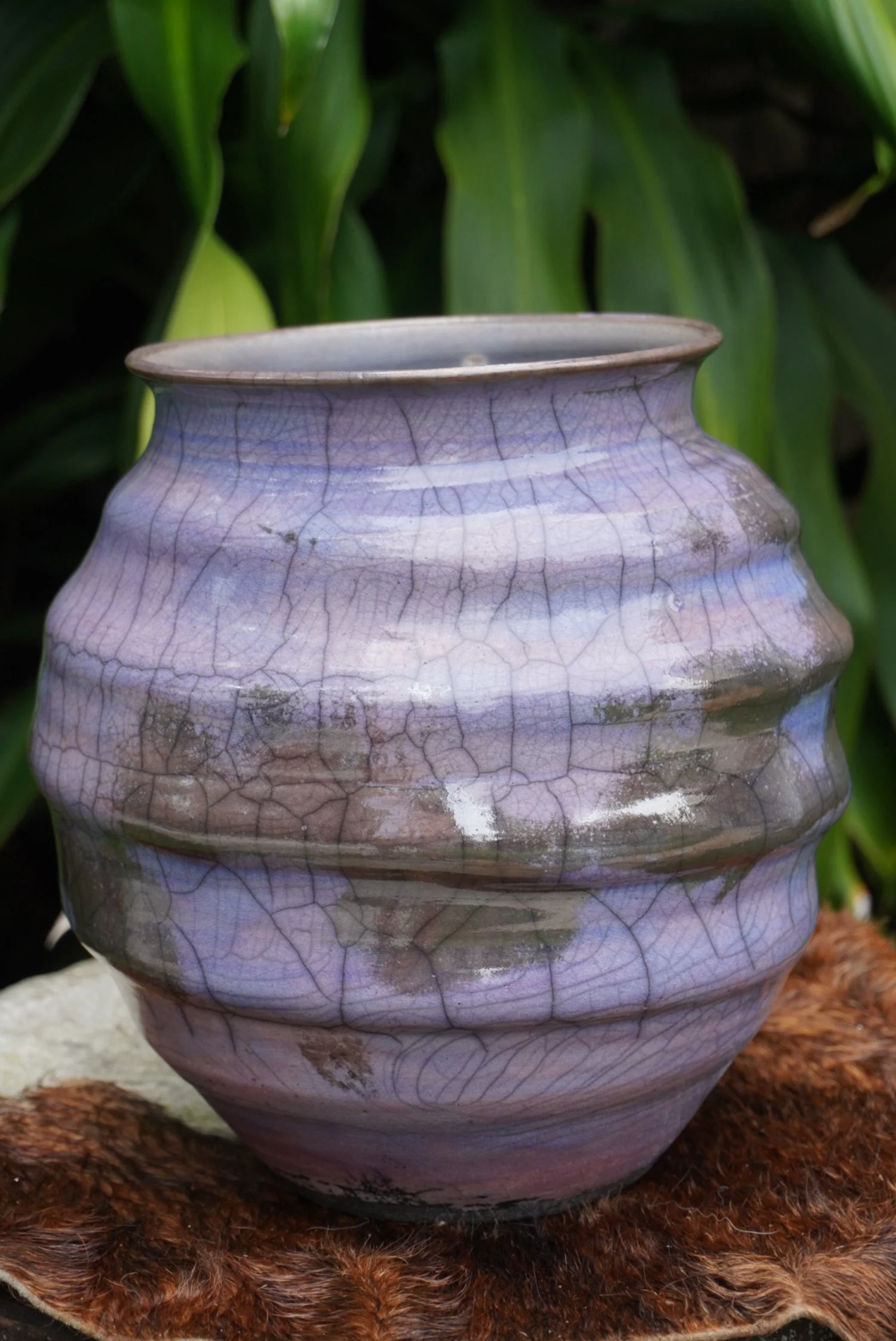
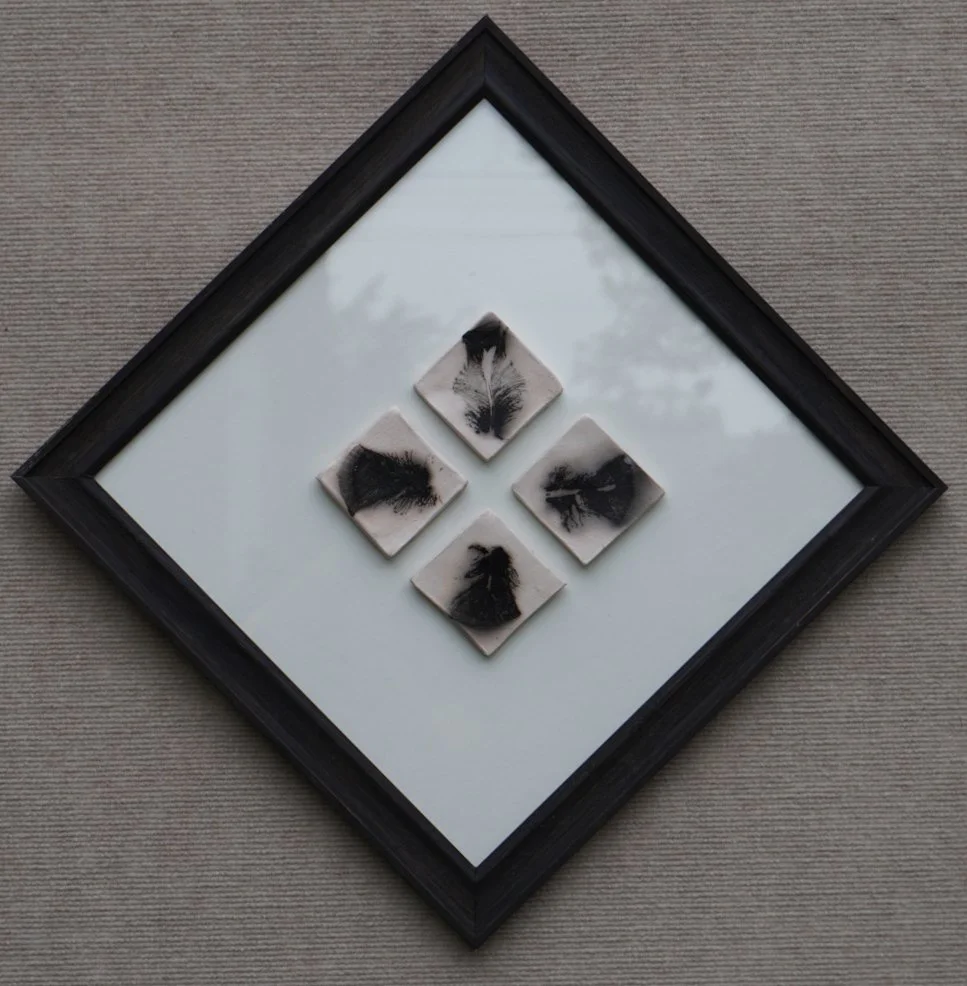
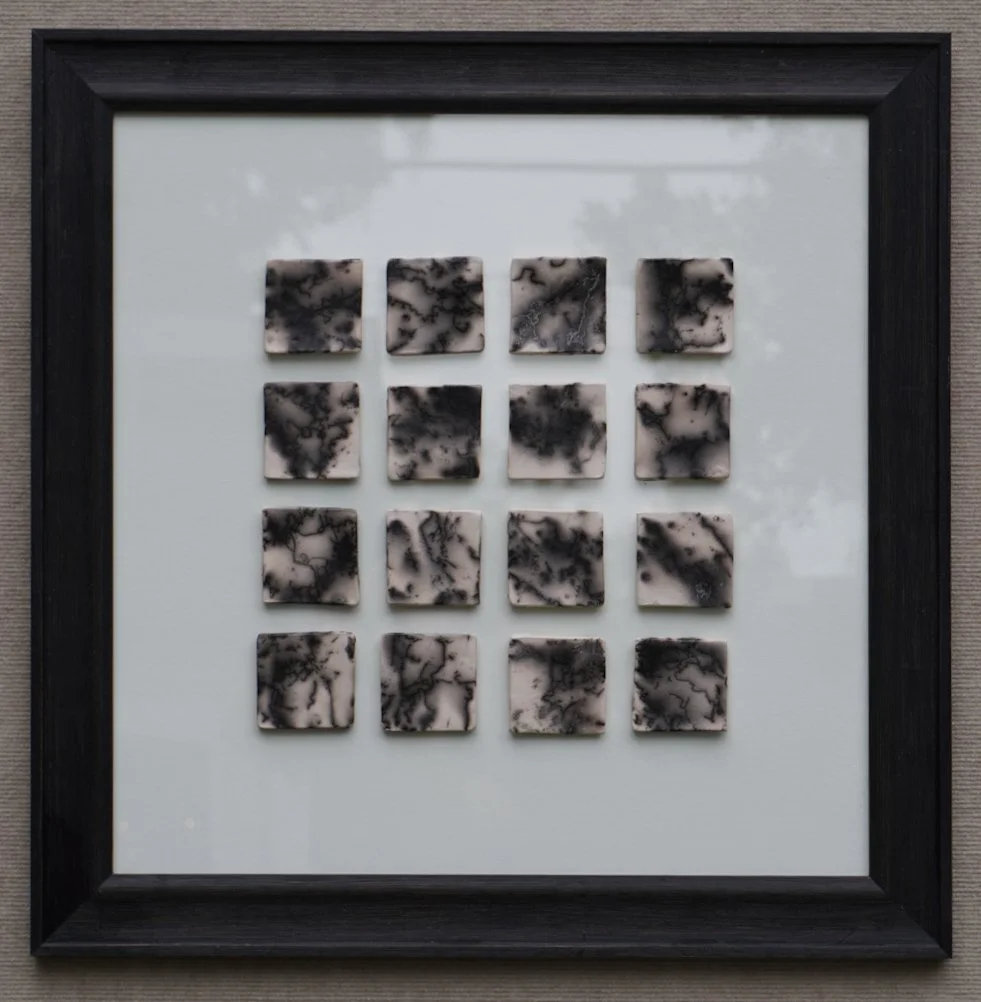


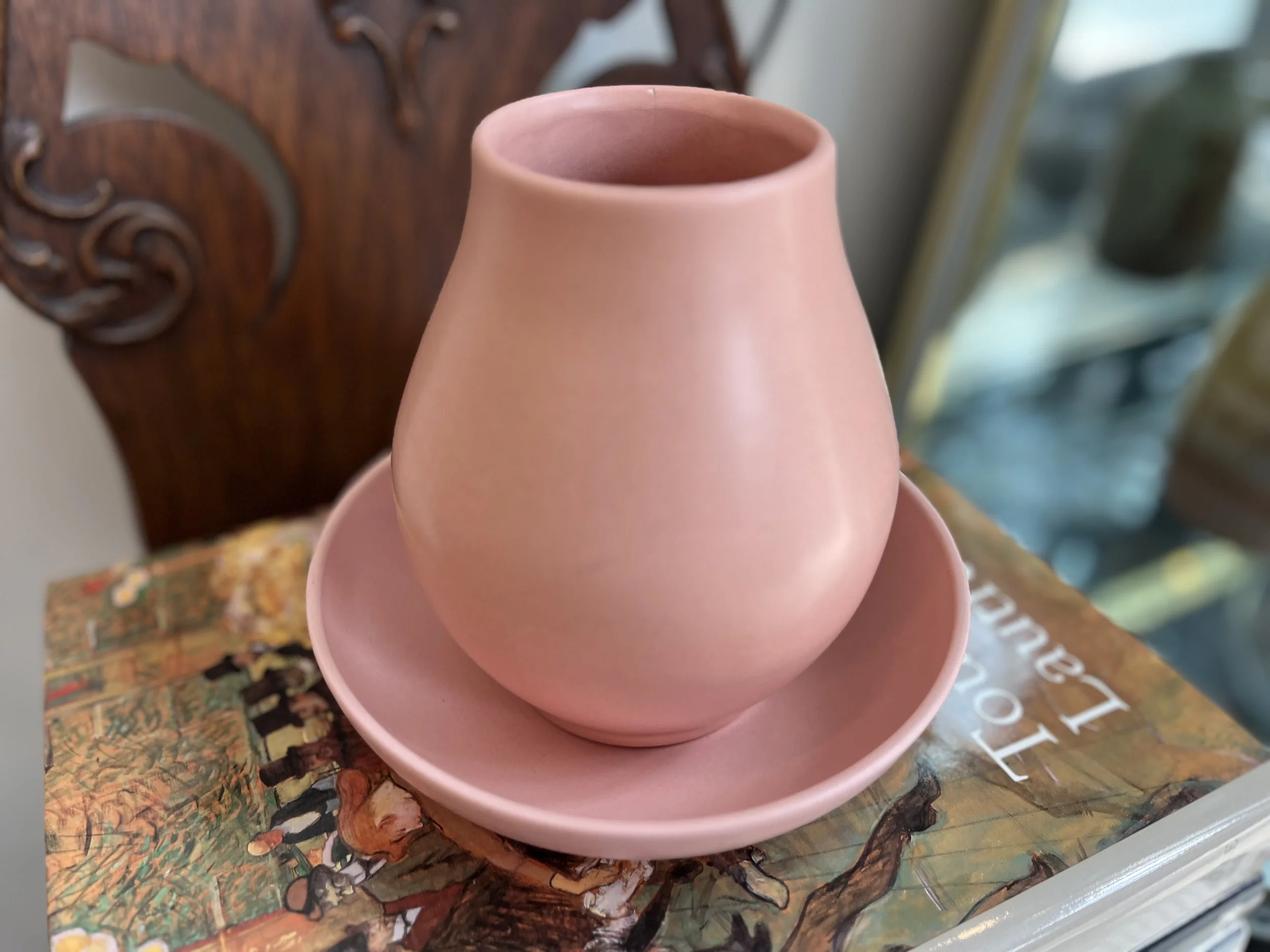




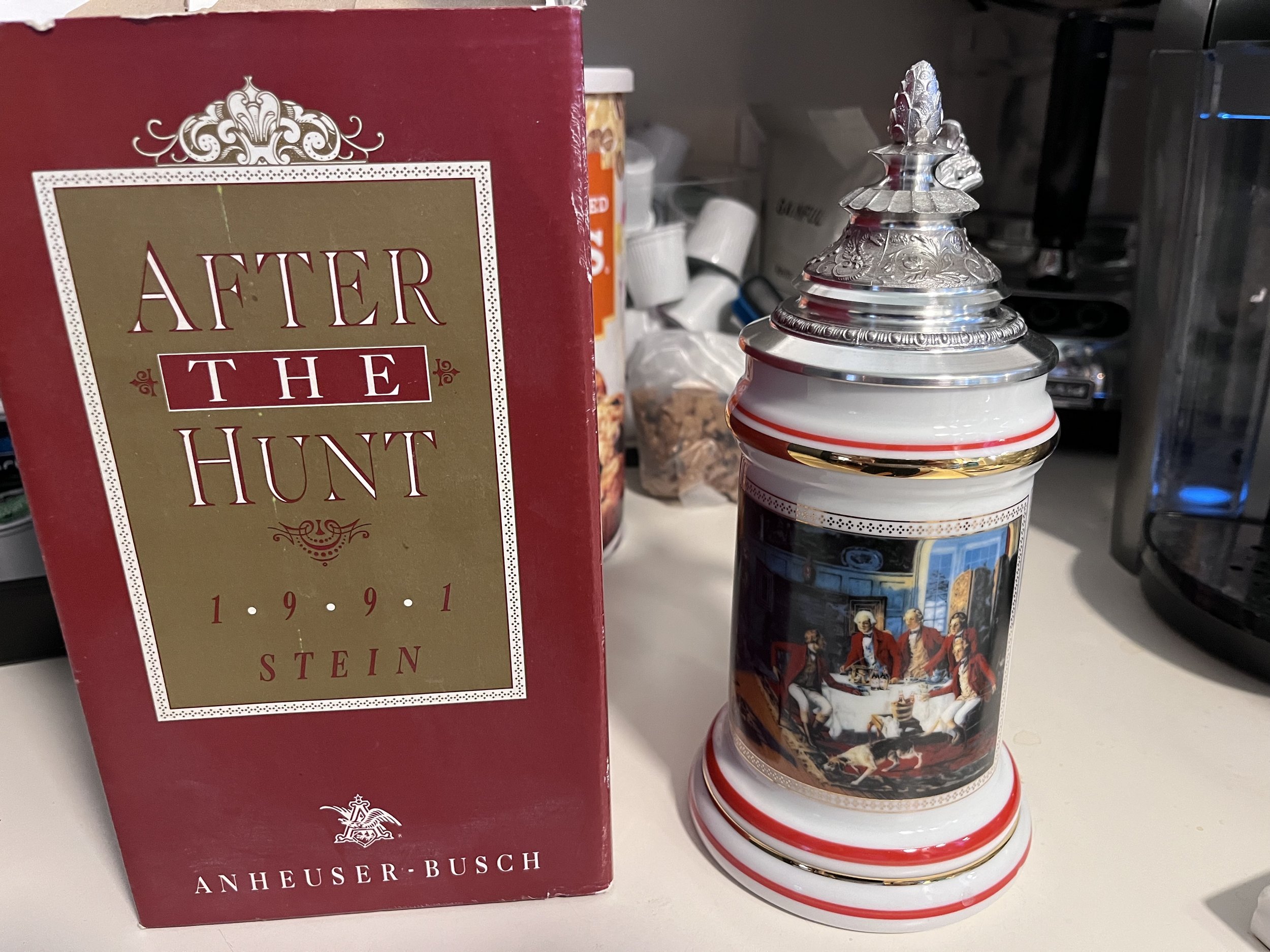
A pair of Rookwood Pottery Production Butterfly Vases #6509 (4.5" x 4.5"). Cream Matte Glaze.
Cincinnati, Ohio. Circa 1940's
Rookwood Pottery was founded in Cincinnati, Ohio, in 1880 by Maria Longworth Nichols. It quickly became one of America's most celebrated art potteries, known for its high-quality ceramics and innovative glazes. Rookwood pieces were often hand-decorated by skilled artists, and the pottery produced a wide range of items, from vases and bowls to architectural tiles.
The Production line, introduced in the early 20th century, featured standardized designs that were more accessible to a broader market while still maintaining Rookwood's commitment to quality. The
#6509 Butterfly vase is a well-recognized example from this line, showcasing delicate yet distinct molded butterfly motifs. These vases were typically produced in various glaze colors, adding to their collectible appeal.
To inquire about pricing and availability, please email BALL HILL The Arcade at info@ballhill.com.